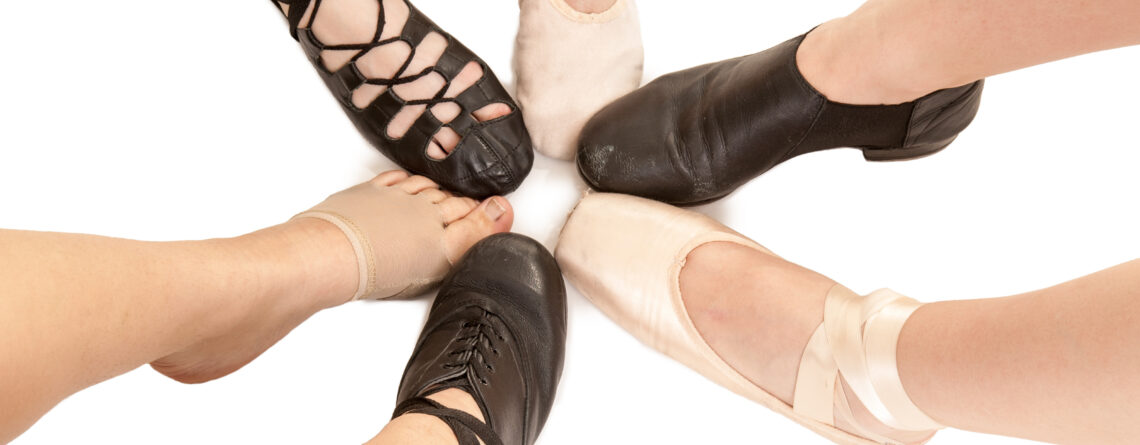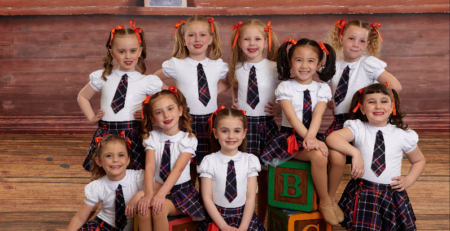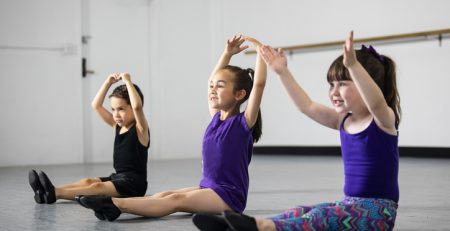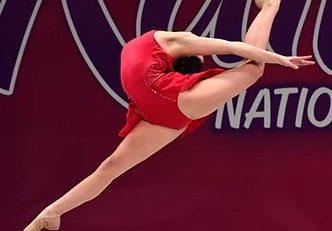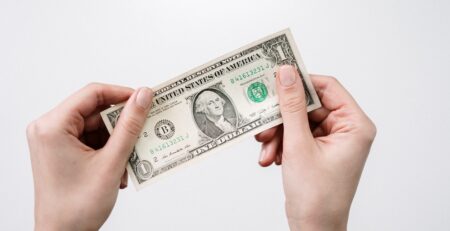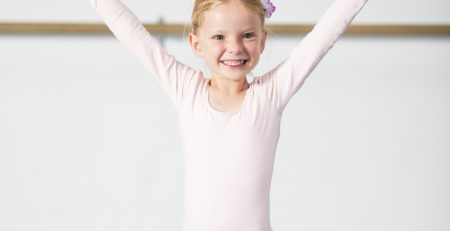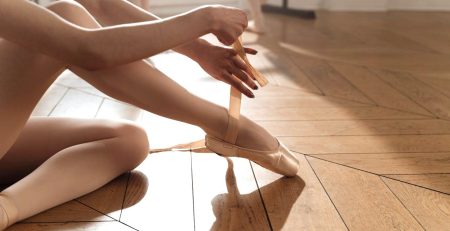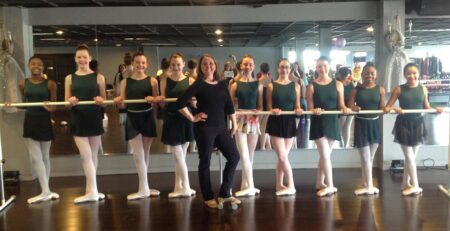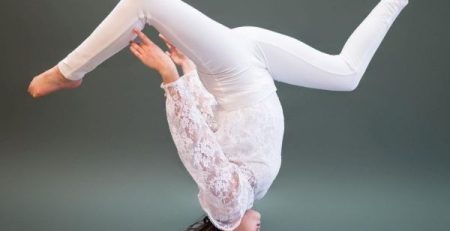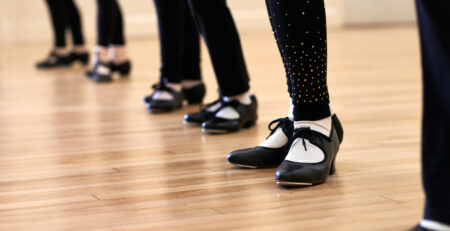Finding the Perfect Fit: A Guide to Choosing Your Child’s Dance Shoes
Now that your child has registered for his or her dance class, it’s time to gather supplies needed, and that includes your child’s first pair of dance shoes! From ballet slippers to tap shoes, proper dance footwear is essential to keep your child’s toes twinkling! Here are some tips to help navigate the wide world of dance shoes!
Know What Your Studio Requires
After registering your child for dance, check with your studio director to see what shoe style, brand, and color is needed for class. Some studios have specific color preference for shoes (pink ballet slippers, for instance), while other studios base shoe color on the teacher’s preference or recital costume selection (such as black or tan jazz shoes). Double check the requirements for your child’s particular class to ensure you are getting the correct shoe.
Tap Shoes
If you have a young tap dancer, discuss with the studio owner specifics for tap shoes: does she want ribbons, laces, buckles, or straps? Heeled shoes or flats? Prices for tap shoes can vary greatly, so be sure you know which tap shoe your teacher is looking for.
Ballet Shoes
Ballet students have options of canvas or leather shoes. Canvas shoes tend to absorb moisture, and they mold well to a dancer’s foot. Leather ballet shoes are more durable, typically last a bit longer, and provide a bit more support. Ballet slippers can come with a “full sole” that runs along the bottom of the shoe (great for beginner dancers), or a “split sole” with a half sole under the heel and a half sole under the ball of the foot. While some teachers allow for personal preference in selecting ballet shoes, others may want uniformity, especially for performances. Check with your child’s ballet teacher first before purchasing ballet flats.
Note that some ballet slippers have drawstrings that can be pulled taut and tied to make a more secure fit. Ask your child’s dance teacher if she wants the strings tied, tucked, or snipped off with scissors. Many ballet slippers also come with pre-sewn elastic across the instep of the shoe so the slipper stays in place and protects the ankle. If the elastic on your child’s shoes is not pre-sewn, take a look at this video for a brief tutorial:
Where to Buy
Buyer beware at discount department stores like Payless or Target! Faux leather tap shoes and soft ballet shoes that look like bedroom slippers will not last as long and do not provide the support needed for your child’s dancing feet. It is recommended that you purchase shoes from a reputable dance store and have shoes professionally fitted. You may be able to purchase shoes from your studio, ensuring you’re getting the exact shoe needed for your young dancer. Reputable sources online (such as Discount Dance Supply) are also great places to shop once you know what footwear is required and your child’s dance shoe size.
Fitting Shoes
Most dance shoes should feel snug, but not too tight. As your child continues to dance in his shoes, the material will stretch and conform to his feet better. Parents may desire to purchase shoes in a bigger size so their child can “grow into them,” but too large of a shoe can cause a tripping hazard and prevent your dancer from utilizing his shoe correctly. Again, a professional dance shoe fitter can help you with finding the perfect sized dance shoe.
Performance Time
With regular wear and tear from weekly dance classes (as well as how fast kiddos can grow over the course of a year!), your child may need to purchase a new pair of shoes for your studio’s end of the year performance. Scuff marks, holes, and shoes falling apart will not look clean on stage and can cause a tripping hazard while performing. You may want to factor in this amount when budgeting your child’s dance expenses for the year.
Additional Shoe Reminders
- Be sure your child removes his/her shoes after class is done. Students should not be walking through the studio parking lot with their new tan jazz shoes on or into neighboring stores with their tap shoes still on their feet! Not only do dancers run the risk of damaging or dirtying their shoes, they can also make shopkeepers pretty upset! Tracking dirt onto your studio’s dance floors can also damage the Marley or **** floors specifically designed for dance.
- Label, label, label!!! Be sure your child’s name is written on the inside of EACH of her dance shoes. A dance studio’s “Lost and Found” bin is likely overflowing with random ballet slippers with no name and students scrambling to locate their shoes! Since everyone’s shoes are similar, it’s important to label each shoe so they can be returned to the proper owner.
Ready to locate the perfect dance studio for you or your dancer? Click on the “Find Dance Studios” tab to begin your search by location, dance styles, ability levels, and age ranges!
~~~~~
Dance Studio Owners: Is your dance studio listed with us? Join our Dance Studio Directory and get your business listed so customers can connect with you and find the classes that fit their needs!


